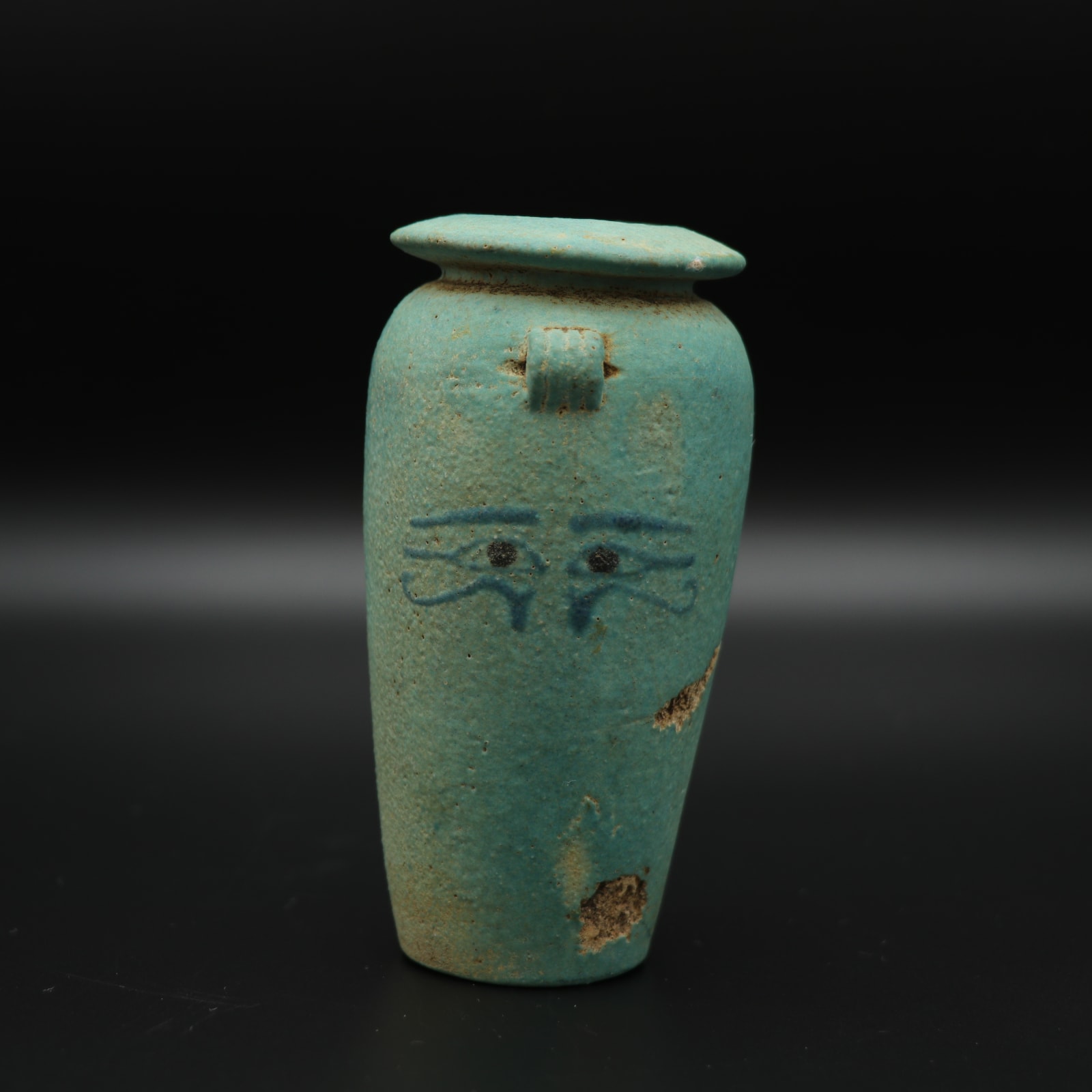New Kingdom Faience Jar with Eyes of Horus, 1500 BC - 1069 BC
Faience
height 11 cm
height 4 3/8 in
height 4 3/8 in
GM.0078
Further images
A marvellous New Kingdom miniaturistic jar or balsamarium in light blue-green faience. The decoration consists in the eyes of the god Horus on both sides of the jar. The Ancient...
A marvellous New Kingdom miniaturistic jar or balsamarium in light blue-green faience. The decoration consists in the eyes of the god Horus on both sides of the jar. The Ancient Egyptians believed the Eye of Horus (wedjat eye) was the most powerful protection against evil. Ever-vigilant against bad luck and misfortune, the symbolic eye of the god Horus was worn by king and peasant alike. Though the eye was sometimes fashioned in gold and precious stones, it was thought to be at its most powerful when colored blue, as in this case.
Egyptian faience is a type of heated quartz ceramic displaying surface vitrification which creates a bright lustre of various colours, with blue-green being the most common. Although faience should not be considered as a category of pottery, as it doesn’t contain any clay and instead contains the major elemental components of glass (silica, or silicon dioxide, or quartz, the primary constituents of sand), faience is frequently discussed in studies relative to ancient pottery. Notably, faience is though considerably more porous than glass and can thus be cast in molds to create vessels or objects. Egyptian faience was widely used for objects of smaller dimensions from beads to figurines and statuettes and faience artefacts have been unearthed in both elite classes and lower classes urban and funerary contexts. It was the most common material for the creation of scarabs and other forms of amulets, including ushabti figures, cosmetic articles, bowls and drinking cups and it was frequently employed in the production of ancient Egyptian jewellery, as the glaze made it smooth against the skin. Egyptian faience was both exported widely in the ancient world and produced in a number of local workshops in numerous locations, and exported faience articles have been retrieved in Mesopotamia, in numerous localities around the Mediterranean basin but also in northern Europe as far away as Scotland.
Egyptian faience is a type of heated quartz ceramic displaying surface vitrification which creates a bright lustre of various colours, with blue-green being the most common. Although faience should not be considered as a category of pottery, as it doesn’t contain any clay and instead contains the major elemental components of glass (silica, or silicon dioxide, or quartz, the primary constituents of sand), faience is frequently discussed in studies relative to ancient pottery. Notably, faience is though considerably more porous than glass and can thus be cast in molds to create vessels or objects. Egyptian faience was widely used for objects of smaller dimensions from beads to figurines and statuettes and faience artefacts have been unearthed in both elite classes and lower classes urban and funerary contexts. It was the most common material for the creation of scarabs and other forms of amulets, including ushabti figures, cosmetic articles, bowls and drinking cups and it was frequently employed in the production of ancient Egyptian jewellery, as the glaze made it smooth against the skin. Egyptian faience was both exported widely in the ancient world and produced in a number of local workshops in numerous locations, and exported faience articles have been retrieved in Mesopotamia, in numerous localities around the Mediterranean basin but also in northern Europe as far away as Scotland.













